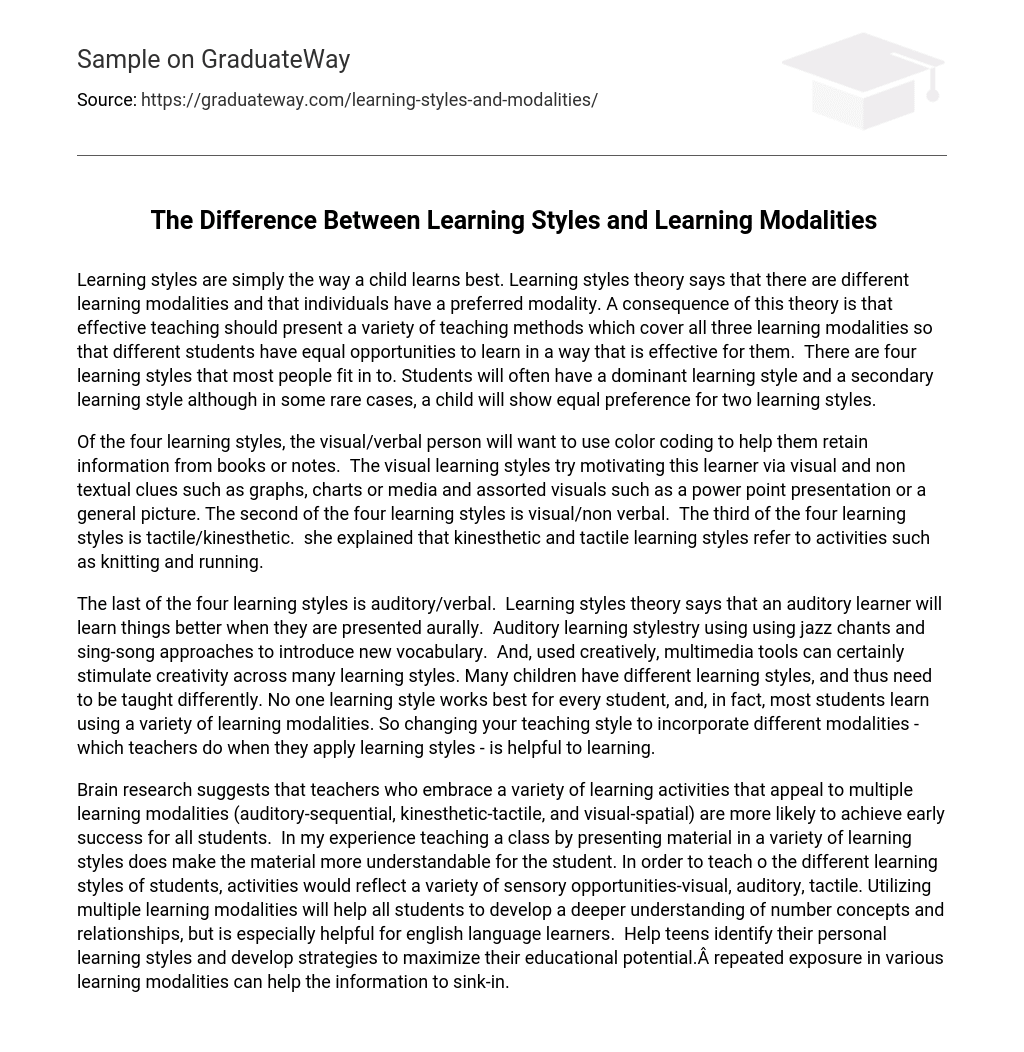Learning styles are simply the way a child learns best. Learning styles theory says that there are different learning modalities and that individuals have a preferred modality. A consequence of this theory is that effective teaching should present a variety of teaching methods which cover all three learning modalities so that different students have equal opportunities to learn in a way that is effective for them. There are four learning styles that most people fit in to. Students will often have a dominant learning style and a secondary learning style although in some rare cases, a child will show equal preference for two learning styles.
Of the four learning styles, the visual/verbal person will want to use color coding to help them retain information from books or notes. The visual learning styles try motivating this learner via visual and non textual clues such as graphs, charts or media and assorted visuals such as a power point presentation or a general picture. The second of the four learning styles is visual/non verbal. The third of the four learning styles is tactile/kinesthetic. she explained that kinesthetic and tactile learning styles refer to activities such as knitting and running.
The last of the four learning styles is auditory/verbal. Learning styles theory says that an auditory learner will learn things better when they are presented aurally. Auditory learning stylestry using using jazz chants and sing-song approaches to introduce new vocabulary. And, used creatively, multimedia tools can certainly stimulate creativity across many learning styles. Many children have different learning styles, and thus need to be taught differently. No one learning style works best for every student, and, in fact, most students learn using a variety of learning modalities. So changing your teaching style to incorporate different modalities – which teachers do when they apply learning styles – is helpful to learning.
Brain research suggests that teachers who embrace a variety of learning activities that appeal to multiple learning modalities (auditory-sequential, kinesthetic-tactile, and visual-spatial) are more likely to achieve early success for all students. In my experience teaching a class by presenting material in a variety of learning styles does make the material more understandable for the student. In order to teach o the different learning styles of students, activities would reflect a variety of sensory opportunities-visual, auditory, tactile. Utilizing multiple learning modalities will help all students to develop a deeper understanding of number concepts and relationships, but is especially helpful for english language learners. Help teens identify their personal learning styles and develop strategies to maximize their educational potential. repeated exposure in various learning modalities can help the information to sink-in.





